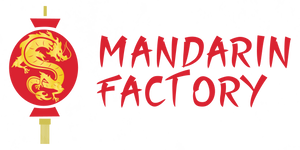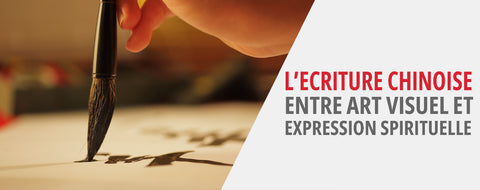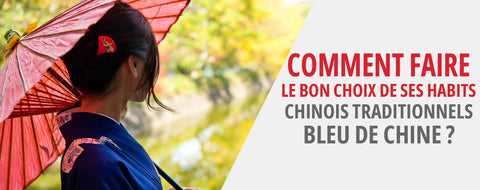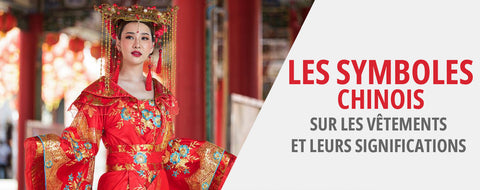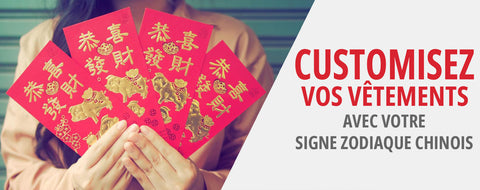
Chinese Symbols on Clothes and Their Meanings
reading - words
Introduction
Clothing refers to all the constituent parts of clothing. Generally, clothing is a function of the circumstance in which it is worn. Even if the primary function of clothing is to cover part or all of the body, it can however have different meanings in some traditions.
When it comes to Chinese culture, clothing is not as simple a matter as it seems. In China, wearing certain types of clothing can connote special meanings. Some clothes have special Chinese characters and are worn for specific occasions.
So, the question arises as to what is the meaning of the Chinese symbols present on their clothes. In order to know more about this fascinating subject on the Chinese culture, we will discover the Chinese symbols present on the clothes and their meaning.
History of Chinese Symbols
Still called Sinograms, Chinese characters are the logographic units that make up Chinese writing or Chinese ideogram. Having undergone a great evolution over time, Chinese is a language that has spanned thousands of millennia.
So, Chinese characters are not just simple signs with randomly drawn boxes and lines. Each of these Chinese characters connotes a precise meaning. Thus, Chinese culture has developed a crucial interest in clothing based on meaningful Chinese characters.
In addition to this, there is what is called “Chinese kenji” (漢字), which are also signs derived from Chinese characters and whose main role is to write part of the Japanese language as well.
Traditionally, the presence of certain symbols on clothes determines the nature of the person who wears it. It is therefore important to study the nature of each of these symbols of China on clothing in order to find each of their meaning.
The main Chinese symbols on clothes and their meanings

Chinese history has seen the use of patterns and symbols on clothing, each connoting a meaning.
The Phoenix
In China, the phoenix symbolizes beauty and purity. It is generally used on the clothing of chinese women part of the imperial familyIn Imperial China, it was the wives of princes, princesses and concubines of the Empress who wore the phoenix. The Empress, for her part, wore clothes with Dragon motifs.
The Dragon
Supreme power is the Chinese symbol of the Dragon motif. The Dragon was a particularly male whose wearing codified certain rules. Although worn by Chinese mandarins, the dragon was worn in different ways. The new emperors wore a dragon head facing forward and officials, nobles wore the dragons in profile on their clothes.
The Fish
Fish is a symbolic motif of prosperity in the Chinese civilization old. Its pronunciation in Chinese corresponds to "yu" and is synonymous with wealth. The fish pattern on clothes is usually used to wish someone a prosperous future.
The Lotus
Also loved by other peoples, the lotus is a common motif on clothing in China. For the Tibetans, it is a sacred flower that symbolizes purity and holiness. The lotus also takes its value from a legend of chinese culture. This is a story about a charming lady with impressive beauty who is always ready to help people. In China, the beauty and the purity are the symbols of the lotus.
The Peony
Symbolizing wealth and prosperity, the peony is a very common motif on Chinese women's clothing. peony is the favorite flower in China and holds the place of Chinese National Flower.
The Chrysanthemum
Chrysanthemum is a flower frequently used as a motif on Chinese women's clothing. It symbolizes the longevity in Chinese civilization.
How are Chinese symbols incorporated into Chinese clothing?

Chinese symbols are represented in Chinese clothing through colors and patterns. The choice of colors and patterns for a garment depend on their symbolic power and meaning.
In China, the color red, for example, connotes prosperity, luck while blue signifies tranquility and wisdom. As for the patterns, the dragon, the phoenix or even the lotus present on the clothes bring an additional meaning to the clothing.
How to choose the right coins with the right symbols?
Choosing the right pieces with the right symbols can be a tricky task. Before you even think about wearing a piece of clothing, it is essential to:
- Know the meaning and power of symbols which are there.
- You should also choose clothes that suit your own personal taste and dressing style.
- The price-quality ratio must be satisfied and must ensure comfortable clothes that last a long time.
Is there a traditional Chinese clothing style?
There is no typical traditional clothing style for all people in China. In ancient China, every dynasty had its own taste in terms of clothing. Thus, traditional costumes can vary across the country. That is why each region of the country has its own own brands and features on clothing.
Thus, traditional Chinese clothing emphasizes the surface of the fabric. For both men and women, the majority of garments were loose-fitting, simply sewn but richly decorated with woven, appliquéd or embroidered patterns.
This culture has hardly changed today, so there is a diversity of types of clothing specific to each tradition or dialect. Which makes it difficult to generalize the idea of a specific Chinese clothing style.
Some traditional costumes emblematic of Chinese culture

The history of clothing is a significant fact in the Chinese civilization. It has undergone a great evolution over time. In Chinese civilization, the Hanfu, the Tang or the Qipao are important distinctive signs.
Hanfu
Hanfu is a traditional costume emblematic of the Chinese culture, and a tributary of the Han ethnic group. Born more than 4000 years ago, this costume is the oldest of all traditional clothing in China.
It is a long, buttonless dress with a crossed collar and a belt around the waist was usually accompanied by it. Wearing Hanfu materializes the social status of a person in ancient China. In society, the rank of people was determined by the width of the sleeve or the length of the skirt.
The Qipao
Being a very famous Chinese clothing in the world, the Qipao is the outfit traditional feminine in China. It is native to Manchurian and has seen adjustments to its style over the years.
The Qipao is a classic garment with side slits, sophisticated fabric buttons on the front and a high collar. It is made of embroidered silk. Known as a women's garment of the upper class, it embodies the gentleness, modesty and beauty of a woman.
Accompanied by the embroidered patterns in gold or silver, the red colored Qipao is commonly worn in China as a wedding dress.
The Tang Suit
Originating from the Qing Dynasty, the Tang is a traditional costume similar to a type of jacket. It consists of knotted Chinese buttons, an opening on the front and a "mao collar". Being the most popular among the Chinese costumes, the Tang is worn by the Chinese on several important occasions. They express their cultural identity through this costume during events such as the New Year.
The Mao suit
The Mao is a stylish and unique suit. It is a constipated for men. It features a buttoned jacket with a turn-up collar, four pockets and loose pants.
It is after the establishment of the People's Republic of China that this costume has taken the place of symbol of proletarian unity. Chinese leaders still wear it today during important ceremonies.
Other Chinese symbols meaning

Apart from the Chinese symbols present on Chinese clothing, there are also other Chinese symbols that accompany the believers on a daily basis by improving their lifestyles.
Chinese symbol of happiness
In Chinese culture, the happiness is represented by the symbol Xǐ(喜喜). It is written twice and means double happiness. This symbol can be offered as a gift to wish someone happiness. The Chinese generally use this Chinese character for weddings.
Chinese symbol love
Used in China and various Asian countries such as Korea, Japan, Taiwan and Singapore, the character (爱) Ài is the symbol of love. Renowned for its beauty and deep meaning, this Chinese character is often seen in tattoos.
Chinese symbol courage
The (yǒng)勇 is the Chinese symbol or Chinese symbol of courage. Made up of the radicals force or power in Chinese, this symbol embodies the strength and provides courage to the one who holds it.
Chinese symbol for luck
Considered the symbol of luck in Chinese tradition, the Fú (福) combines the meanings “vabundance and wealth " And "gift of God " Wearing this symbol brings blessing and success in work and undertakings.
Chinese symbol peace
If you are looking for a harmonious life, make the symbol Ān (安) your daily ally. These Chinese characters of peace help to maintain healthy and peaceful relationships with loved ones.
How to write Chinese characters?

Contrary to the french alphabet which is made up of letters, the Asian alphabet and more precisely the Chinese alphabet is made up of Chinese letters or characters similar to strokes, which are different from Chinese logos. Numbering from 1 to 36, these characters are put together to form a word.
Writing Chinese letters in Chinese requires compliance with a set of rules which are:
- Write from left to right
- Go from top to bottom
- First the simple stroke on the left, then the complex stroke on the right
- Draw the horizontal line before the vertical line that crosses it.
- Draw the largest line first, then the smaller ones.
- Write the rightward slash after the leftward slash.
- Plot the point last.
Conclusion
In summary, Chinese tradition has important historical and cultural values. Whether it is Chinese symbols on clothing or even simple symbols of beliefs, it is important to know each of their meanings in order to know how to wear them.
